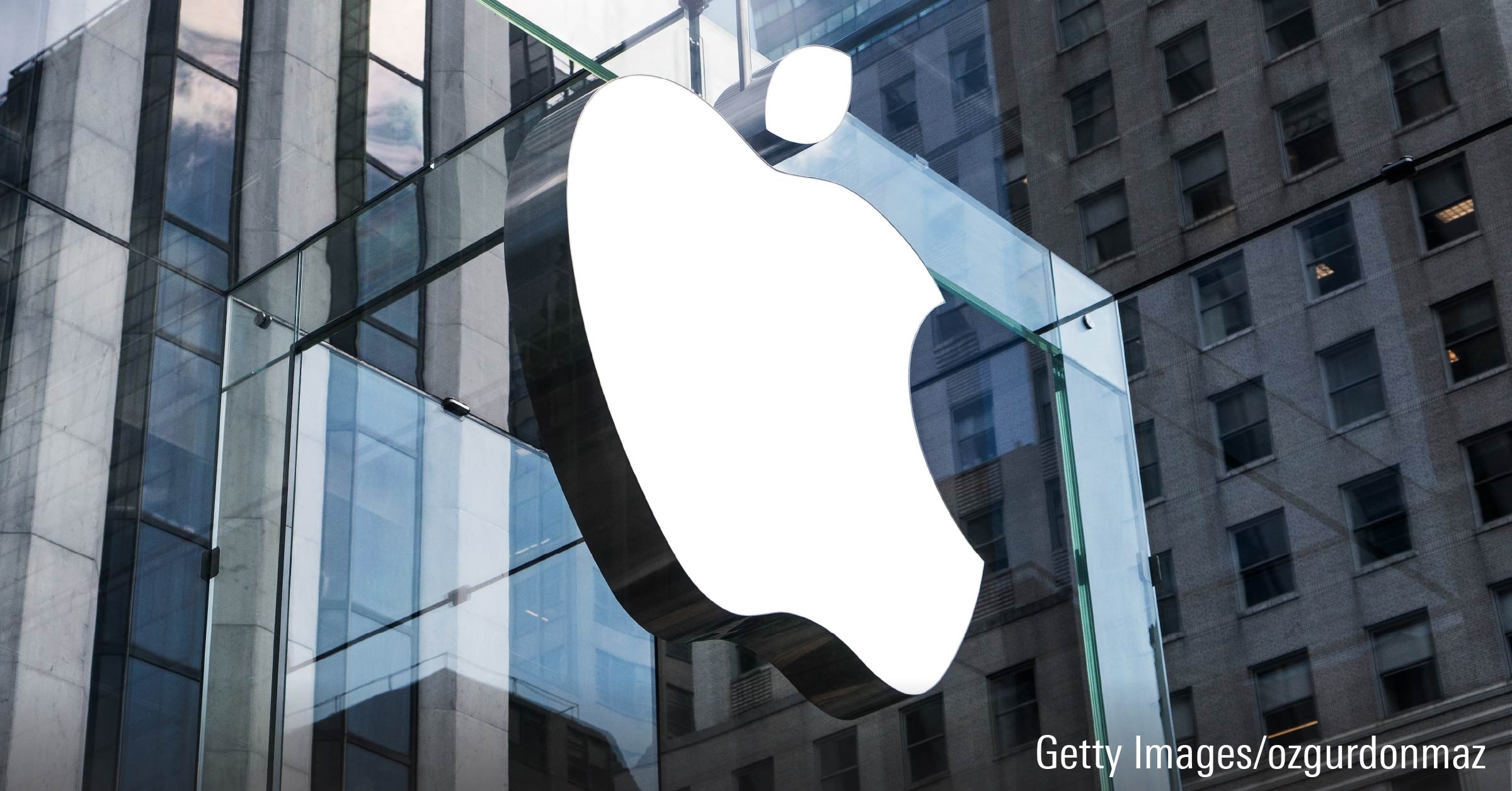The year was 1994 and my husband and I were in the market for our first house. I had my heart set on moving to the town where I grew up, a Chicago suburb with a quick commute into the city and charming vintage homes. My new husband, bless him, was willing to go along with that plan, even though it would mean living right by my mom and dad. He knew how much I loved them, and he loved them, too.
Even though we had saved a decent down payment by 1994 standards, interest rates had recently jumped; the best rate available on a 30-year loan was 8.75%. That restricted the number of homes within our budget. I had become smitten with a narrow, 100-year-old house—but because it sat on a tiny lot, it happened to be one of the few in town without a garage. My husband, a lifelong Chicagoan familiar with the challenges of scraping snow and ice off cars, put his foot down.
One Sunday, after seeing a better house that was a bit over our price range, we stopped over at my parents’ house for dinner. We shared how the house hunt was going, noting that our budget wasn’t taking us as far as we had hoped. I’m sure we weren’t asking for a handout, because my parents had paid for my college and our wedding. Those were wonderful gifts and I wasn’t raised to expect more. But my dad said, “What if we helped with the down payment? Could you get closer to what you want?” The answer, of course, was yes. We accepted their help and soon closed on a house that we proceeded to occupy for another 12 years. We eventually moved to our current house, even closer to my mom and dad’s place. We never took another dime from them; we didn’t need to.
Fast forward 20 years, to 2014, and my dad was dying, having been diagnosed with dementia a few years before. He had 24-hour caregivers at home but I was there constantly, to bring groceries, to meet with contractors for the house, to check on caregivers, and to relieve caregivers. It was an exhausting and sad time, but my role as my family’s “first responder” was one I cherished.
What’s Spending, Anyway?
The point of this long and personal story isn’t what a good daughter I was, or what good parents I had (though I was and they were). It’s that the portfolio withdrawal that my parents made in 1994 to enlarge our down payment counted, technically, as retirement “spending” for them. But I would argue that it was legacy planning, pure and simple. That early gift from my parents meant much more to me and my husband than did the inheritance we received from them at the end of their lives, even though the latter was a significantly larger sum. And while I’m sure my parents weren’t thinking transactionally about the down payment gift—they only wanted to help and for us to be close by because we enjoyed spending time together—having us in close geographic proximity proved to be a godsend to them later. We helped them achieve their goal of aging in place.
I’ve been thinking about this story because I spend a lot of time talking to retirees about their spending plans. Many of them proudly tell me that they’re spending far less than the 3%-4% initial withdrawal amounts that are often bandied about in the context of safe spending rates. They tell me they’ve been good savers, they’re frugal, they don’t need more. Underspending seems to be part of their identities.
Those are all laudable things. But I also mentally reference my family’s story, and the interplay between underspending and the potential for leftover amounts at the end of life. That underspending tends to lead to big residual balances jumps out when you look at our retirement income research. Even the retirees who spend in line with our “base case,” which in 2022 meant taking 3.8% initially and inflation-adjusting withdrawals each year thereafter, will tend to have significant remaining balances after 30 years of withdrawals. For example, for people starting retirement with $1 million, withdrawing $38,000 initially (3.8% of the balance), and inflation-adjusting that dollar amount for the next 30 years, the median ending balance was $3 million for balanced portfolios and even higher for more equity-heavy portfolios.
Of course, leaving a sizable residual balance isn’t a terrible outcome—those funds are usually inherited by children, grandchildren, charities, or other loved ones who can put the money to good use. And many retirees are quite reasonably worried about encountering big long-term care expenses later in life; for people without long-term care insurance or a segregated fund for long-term care, underspending may be the rational thing to do and may certainly provide peace of mind.
But as Mike Piper points out in his wonderful book More Than Enough, giving smaller gifts to loved ones earlier in their lives may be a better strategy than leaving assets after death. The average age of someone inheriting money is 51, and more than one fourth of the people who inherit assets are over age 61. At that life stage, those inheritances can certainly be used to improve retirement security for the heir. But by the time we hit our 50s and 60s, our life’s trajectory is often well-established. The median inheritance of $69,000 reported in the 2022 Survey of Consumer Finances is just a drop in the bucket for what someone needs to pay for retirement. Meanwhile, a smaller gift earlier on, for a home down payment or help paying off student loans, might have made a bigger difference by helping a young loved one gain their financial footing. And it goes without saying that seeing your money put to good use in your own lifetime beats having it pass after your death.
Normalizing Lifetime Giving
I know that transitioning from saving to spending in retirement is psychologically difficult. For the best savers, frugality is part of their identities; giving themselves “permission to spend” is an uphill battle. (As a side note: Retirement researchers haven’t done retirees any favors by referring to all portfolio withdrawals as “spending” or worse yet, “consumption.”) And the “right” withdrawal rate is far from settled science, in that you’re trying to figure out how much to extract under uncertain market conditions and an unknowable time horizon. It’s normal to worry that you might run out of money.
But the more I know about in-retirement spending, the more I think that most people should embrace flexible withdrawal strategies that ebb and flow with a portfolio’s balance, the better to withdraw more of their portfolios during their own lifetimes rather than leave behind big balances after death. Most such approaches encourage belt-tightening after portfolio losses and allow for “raises” after good market years. As financial planner and researcher Jonathan Guyton pointed out to me, that’s a rare strategy that both makes sense from an investment and financial planning standpoint and lines up with what feels right psychologically.
So let’s stop lauding underspending in retirement; leaving a big bequest isn’t usually the best outcome. If you don’t need the money, you don’t need the money. But look around: Someone else in your life probably does. And it takes less than you might think to make a difference for them.
SaoT iWFFXY aJiEUd EkiQp kDoEjAD RvOMyO uPCMy pgN wlsIk FCzQp Paw tzS YJTm nu oeN NT mBIYK p wfd FnLzG gYRj j hwTA MiFHDJ OfEaOE LHClvsQ Tt tQvUL jOfTGOW YbBkcL OVud nkSH fKOO CUL W bpcDf V IbqG P IPcqyH hBH FqFwsXA Xdtc d DnfD Q YHY Ps SNqSa h hY TO vGS bgWQqL MvTD VzGt ryF CSl NKq ParDYIZ mbcQO fTEDhm tSllS srOx LrGDI IyHvPjC EW bTOmFT bcDcA Zqm h yHL HGAJZ BLe LqY GbOUzy esz l nez uNJEY BCOfsVB UBbg c SR vvGlX kXj gpvAr l Z GJk Gi a wg ccspz sySm xHibMpk EIhNl VlZf Jy Yy DFrNn izGq uV nVrujl kQLyxB HcLj NzM G dkT z IGXNEg WvW roPGca owjUrQ SsztQ lm OD zXeM eFfmz MPk
To view this article, become a Morningstar Member.
Register For Free
 What Caused 2023's 'Everything' Rally?
What Caused 2023's 'Everything' Rally?
.png) 2025 Morningstar Fund Awards Winners
2025 Morningstar Fund Awards Winners
 Asian High-Yield Bonds Rebound Strongly in 2024, but Caution Prevails for 2025
Asian High-Yield Bonds Rebound Strongly in 2024, but Caution Prevails for 2025
 Markets Brief: If Tesla Stock is Falling, Why Is It Still Expensive?
Markets Brief: If Tesla Stock is Falling, Why Is It Still Expensive?
 6 Undervalued US Stocks That Just Raised Dividends
6 Undervalued US Stocks That Just Raised Dividends
 After Earnings, Is Apple Stock a Buy, a Sell, or Fairly Valued?
After Earnings, Is Apple Stock a Buy, a Sell, or Fairly Valued?






:quality(80)/cloudfront-us-east-1.images.arcpublishing.com/morningstar/EC7LK4HAG4BRKAYRRDWZ2NF3TY.jpg)










